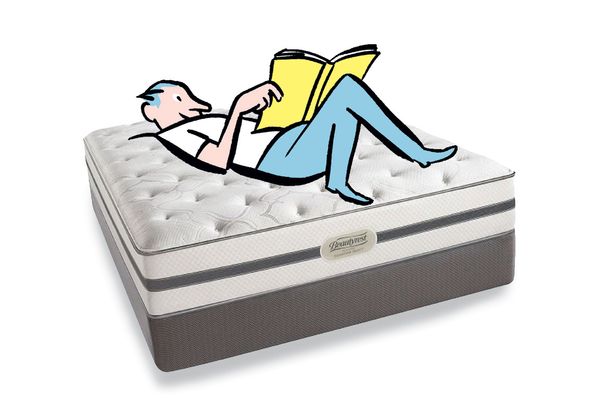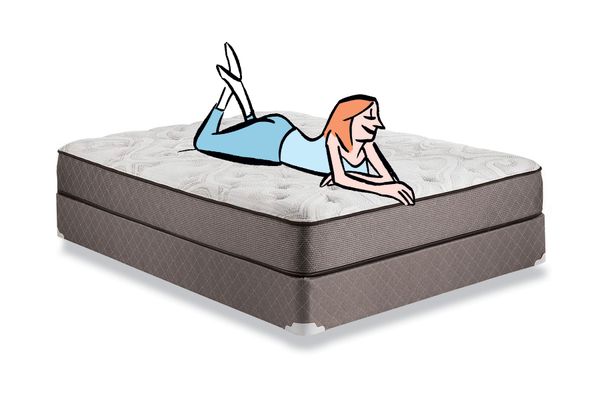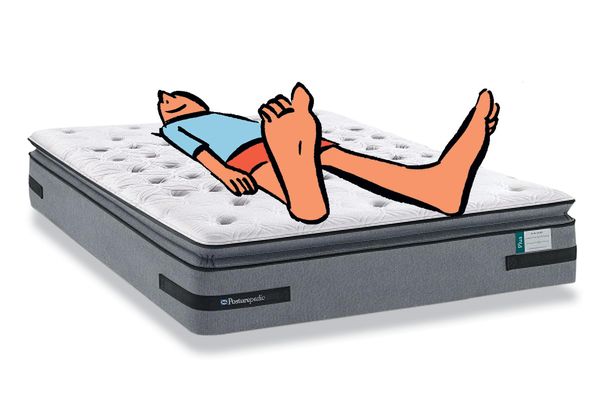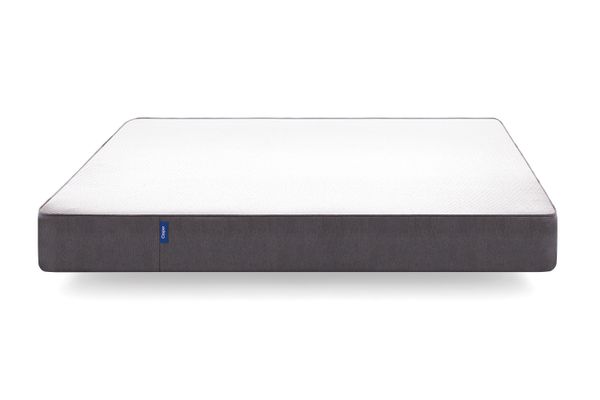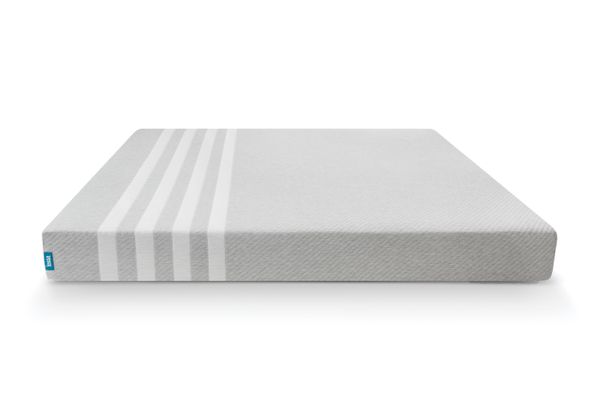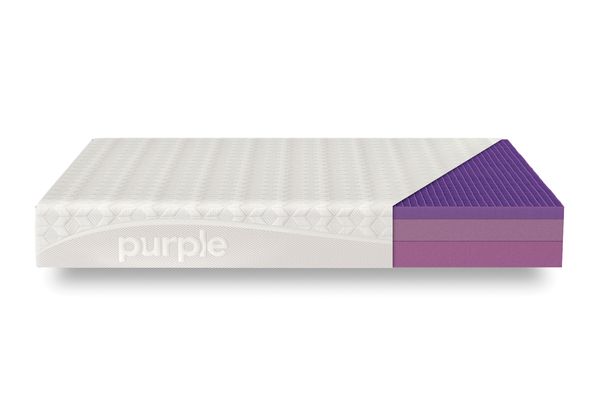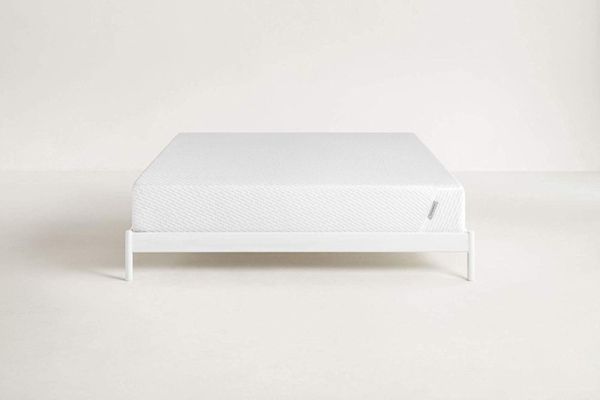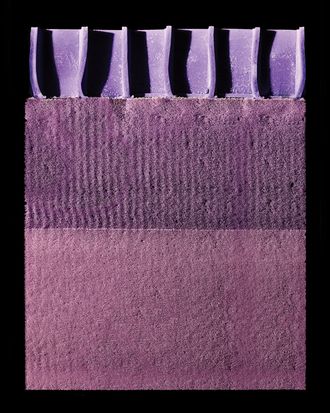
It’s not crazy — faintly ridiculous maybe, but not crazy — to suggest that we are living in what amounts to a golden age of mattresses. Never before have so many of the best mattresses been available for so little — or so much. If you are the kind of person for whom a Lamborghini is too conspicuous a display of wealth, there is a mattress like the $150,000 Vividus from Hästens. If you are the kind of person who wants to buy a mattress that costs 187 times less than Hästens’ handmade, all-organic, somewhat imperious product but is certainly not 187 times less comfortable, there are hundreds of options. And if you are the kind of person who finds so many options overwhelming, there is a cohort of new and innovative e-commerce mattress companies that make mattress purchasing as easy as clicking a button. But all these choices mean it’s easy to lose sight of the only question about mattresses that matters: Can any of them help you sleep better at night?
Until relatively recently, the mattress industry wasn’t exactly a hotbed of technical achievement. The first leap forward came 146 years ago, when a German named Heinrich Westphal addressed the problem of sleeping on a mattress filled with leaves, straw, or whatever else the lumpenproletariat had lying around by inventing the durable and easy-to-manufacture innerspring mattress. That’s a mattress filled with coiled steel springs (typically between 600 and 1,000) for support, topped with batting for comfort, and wrapped in ticking. The odd water-bed and air-filled-mattress fads aside, Westphal’s invention remained the basic template, the standard, for more than a century — until 1992, when Tempur-Pedic imported viscoelastic polyurethane foam, designed by NASA for aircraft-seat cushioning, into mattresses and provided the added comfort of a material that conforms to the body.
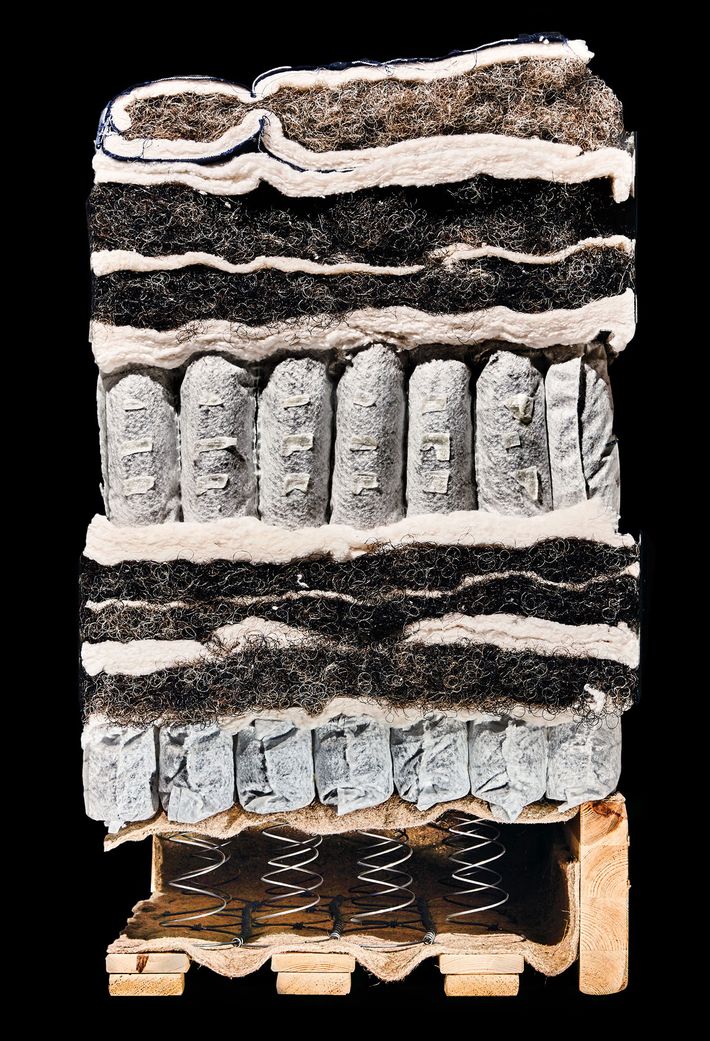
Now, increasingly, consumers are buying mattresses online without having tried them. The vast majority of the roughly 22 million beds sold in America every year are still purchased from a physical store, but in 2016, experts estimate, the three biggest e-commerce mattress retailers (Casper, Saatva, and Tuft & Needle, none more than five years old) generated $500 million in revenue. Their sales growth is triple that of the brick-and-mortar Old Guard. So-called bed-in-a-box companies sell one model, generally in the $800 range and made of foam, rather than springs, so it can be squished into a box and easily shipped to your home. (Where you can experience the delight of unfurling it — sharing that moment has become a surprisingly popular YouTube subgenre.) You never have to deal with a salesperson, and, because you can’t try it before buying it, the return policies are generous (even if getting it back in the box is not the easiest). All you have to do is go to, say, Casper’s or Lull’s or Leesa’s site, pick the size of the mattress you want — perhaps after reading a prominently placed screed on their sites against traditional mattress companies’ shady business practices; look for headings like “The Truth” or “Sleep Exposed”—and simply click BUY. The process may seem unnervingly simple for such an important purchase, but according to the sleep experts, mattresses really need to do only two things: provide pressure relief — which means distributing your weight evenly across the mattress’s surface to avoid pressure points and soreness — and stay cool.
About 100 of these Casper types are now competing in the click-to-buy space. And as if mattress choices weren’t already complicated, other brands are rolling out smart beds — they’ll sell in the $3,000-to-$5,000 range — that can measure various sleep-related biometrics, automatically raise your head if you’re snoring, warm your feet if they’re cold, and shut off your phone when you don’t have the willpower to stop scrolling Twitter. (Okay, not that last one, but why not imagine a feature that’s really worthwhile?)
The “disrupters” are moving in lockstep with what amounts to a collective cultural obsession with sleep. The average American gets about six and a half hours of sleep per night, down 90 minutes from a generation ago. As a result, we’re increasingly fixated on how to optimize the sleep we get. Hence the explosion of sleep-monitoring apps, wearable sleep trackers, smart clocks, and smart pillows that help you properly attend to your “sleep environment.”
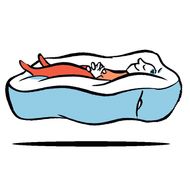
But in the effort to trumpet their products, young companies have, ironically, replicated the old bewildering problem of the mattress store, just at a lower cost. Now, instead of being overwhelmed in a Sleepy’s, consumers are overwhelmed while comparison shopping on the internet. Whatever disruption has occurred, it has only plopped consumers right back into the mattress maze, and it’s advertising, not mattress technology, that’s leading them out. “Decisions are coming down to two things,” Joe Auer, co-founder of the Mattress Clarity review site, says. “Personal preference — some people like foam mattresses and some people don’t—and marketing: People are buying the mattress they see ads for the most.”
So how then should we pick a mattress? Loving an ad? Throwing a dart? Abusing the 100-day return policies of the start-up brands and filling your apartment with human-size mattress boxes? Another option, according to clinical psychologist and sleep expert Dr. Michael Breus, is to show up to an old-school mattress store at the end of the day, when your feet are a little swollen, wearing sweatpants or some other garment with pajamalike comfort, and carrying your pillow from home: Once the sales associate shows you a few top beds, set an alarm and spend seven minutes on each, “to allow your heart rate to adjust to lying down.” There are ways, in other words, to find what you’re looking for amid all the high-density foam, inner coil springs, Dunlop latex, and moisture-wicking fabrics. It just takes a little time. —David Marchese
Do You Want to Try One Out in Person?
Here’s how you can, following the bring-your-own-pillow-and-rest-for-at-least-seven-minutes advice of clinical psychologist and sleep expert Dr. Michael Breus. By Lauren Schwartzberg
Simmons Beautyrest Recharge Signature Select Hartfield Luxury
At Mattress Firm (the company that bought Sleepy’s and renamed all the stores), my boyfriend and I lie listening to a mom burp her baby and I’m distracted by the massage settings of this model’s adjustable base (sold separately). At the sixth minute, my outlook changes. It isn’t that I’m more relaxed but that I can actually feel the way my body hits the mattress. The goal for a mattress, according to the experts, is pressure relief — to have your entire spine hit it evenly, no one part sinking lower than the next, and it is only after the five-minute mark that I feel settled enough to be mindful of that. This mattress feels good.
Hampton and Rhodes HR500
I’ve never used a memory-foam mattress before, and I love it. It envelops my whole body, letting me sink in deeper than I ever would with non-foam, while somehow still remaining firm enough that I feel propped up. It’s also much less bouncy, which I’m not sure if I like. It takes about four minutes for my body to settle in. We listen to Adele’s “Send My Love (To Your New Lover),” we read on our cell phones, I start feeling tired, but I don’t fall asleep. When the timer goes off, my partner says his back is too hot. I didn’t feel the same way, probably because I generally prefer the heat, but a Google search on memory foams tells me that they are known to suck in heat and offer less breathability than spring mattresses.
Sealy Deveraux With Plush Euro Pillow Top
At first, this one feels soft and cozy with its plush top. But about six minutes in, I realize that my butt is definitely sinking lower than my back, leaving a slight opening between my back and the mattress and starting, even after just minutes,to cause lower-back pain. The pressure relief isn’t there. When I flip to lie on my stomach, I feel like I’m sinking in there too. We try the Hartfield again (mattress No. 1), and after another full seven minutes, we can tell why we prefer it. It hits in all the right places. The memory foam is a close second, but I’m not ready to risk night sweats. As we get ready to leave, the store owner comes over and says that for $50, we can stay the night.
This Sealy model is no longer available, but here is a similar Queen version and here is a similar Full version.
How to Haggle in 2017
Using the advice of Nick Robinson and Joe Auer, respective founders of the mattress-review sites Sleep Like the Dead and Mattress Clarity.

Tip No. 1 | Ask Directly for a Discount
Nick Robinson prefers the old “Can you do any better?” line. I tried this at Coco-Mat, and it worked immediately. After testing out its $4,000 Proteas mattress, I asked if there was any flexibility and was told that since it was the end of the month, the store could offer 15 percent off, a free pillow, and a free linen set. At Mattress Firm, I used the line on a queen Beautyrest Hartfield, and it was swiftly dropped from the $750 listed price to $600 with the delivery fee reduced by half, to $40.
Tip No. 2 | Reference the Start-ups
Traditional mattress stores have made changes to compete with the Caspers of the world. When I referenced Casper’s generous return policy during my Mattress Firm trip, I was offered a 100-day trial, after which I could still return the mattress for a full refund.
Tip No. 3 | Don’t Try the “It’s Cheaper Online” Logic
“The most confusing thing is that different stores will use different names for the same mattress,” says Auer. And indeed, at Mattress Firm, when I showed the employee a mattress I found online that was extremely similar to the Beautyrest Hartfield, but $509, he told me the Hartfield had 50 more coils — a metric I couldn’t verify made any difference but also couldn’t argue against. So I asked for a free pillow, which I was told I could get if I wrote a Yelp review.
Tip No. 4 | You Can’t Haggle a Casper
I called up the customer-service line and told the cheery woman on the other end about my $600 queen-size Beautyrest mattress that I could return after a 100-day trial. In response, I was told there’s no price matching. I followed up by asking for a pillow to sweeten the deal and was directed to “Google around” for a $50 promo code, which would only bring a $950 queen Casper down to $900 (as anyone who’s ever been on the subway knows, the code is “subway”). —L.S.
Do You Want to Buy One Online?
A comparison of the four major start-ups. —D.M.
Secret Sauce
Casper plays this one even closer to the vest than its already pretty secretive competitors, focusing on process — its intensive R&D team continually refines the product — rather than a singular element of its memory-foam mattress.
What It’s Supposed to Do
“Open cell” technology keeps heat flowing away from your body; the “pressure relieving” foam and “springy” top layer are meant to produce a “practically weightless” feeling.
What It Actually Feels Like
More than the other mattresses here, the Casper had significant sink to it — especially around the butt — which made my legs feel slightly and pleasantly raised above my hips.
Secret Sauce
A top-layer of “cooling Aveena foam,” a middle layer of naturally pressure-relieving foam, then a base layer of dense foam for support — all contributing to its “universal adaptive feel.” [Editor’s note: Since this story was first published, Leesa now refers to its top layer simply as “foam.”]
What It’s Supposed to Do
Be comfortable to everyone, with an emphasis on the physically active, who treat sleep as a performance-enhancer — hence endorsements from Olympians Michael Phelps and Aly Raisman.
What It Actually Feels Like
As a non-Olympian, I can’t attest to the Leesa’s restorative powers, but the mattress had only minimal sink, and I had the sensation of lying on a soft yet flat surface that felt cozy and supportive in any sleeping position.
Secret Sauce
A purple — hence the company’s name — gridded top layer made of a proprietary “Hyper-Elastic Polymer.”
What It’s Supposed to Do
Deliver “perfect spinal alignment,” neutral temperature (i.e., be neither hot nor cool), and pressure relief for the hips and shoulders.
What It Actually Feels Like
“Hyper-Elastic” is no joke; this mattress felt noticeably bouncier than the others. And presumably this won’t matter once you’ve put the mattress in its place, but the Purple is significantly heavier — and thus harder to move — than its trio of competitors.
Secret Sauce
“T&N Adaptive Foam.”
What It’s Supposed to Do
Aided by a “supportive base layer” of material that keeps you from sinking too much into the mattress, the adaptive foam uses gel and graphite to disperse heat away from your body so you stay cool.
What It Actually Feels Like
Where Casper aspires to a feeling of weightlessness, the firmer Tuft & Needle gives a sensation of being held up rather than floating. There’s almost no sink.
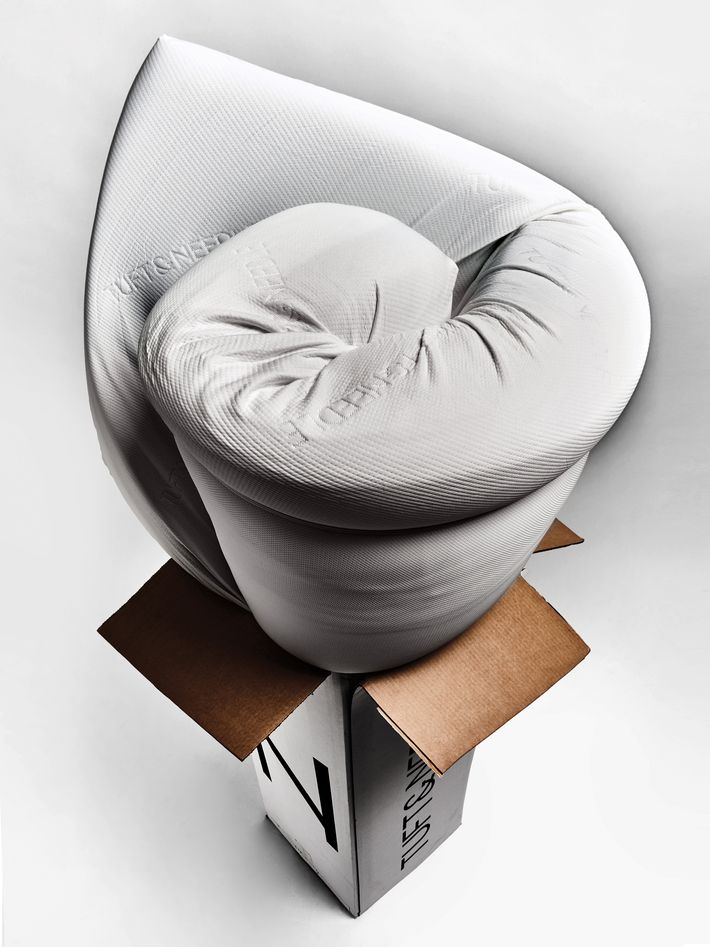
And 15 Other Casper Types
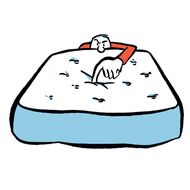
1. Aviya: An innerspring and foam-hybrid mattress with a semi-curious selling point: “Strong edges for a larger feel.” ($849 at aviyamattress.com)
2. Bear Mattress: Another mattress for athletes: Bear’s topmost “Celliant” layer “absorbs the body’s natural heat and reflects far infrared back to the skin” to aid in recovery from physical activity. ($750 at bearmattress.com)
3. Bed in a Box: The granddaddy of the e-commerce mattress business, Bed in a Box has been offering, yes, beds shipped in a box — made with the instructively named CoolRest and SureAlign foams — since the early aughts. ($799 at bedinabox.com)
4. Brentwood Home: Latex, spring, and foam mattresses with a “California ethos.” So that’s why the models are all named things like Pacifica and Sequoia. ($695 at brentwoodhome.com)
5. Cocoon Bed: Cocoon is old-guard mattress brand Sealy’s recent foray into the bed-in-a-box market. Buyers can personalize their mattress by choosing between a soft or firm “comfort layer.” ($599 at cocoonbysealy.com)
6. Allswell: At 12-inches tall, Allswell is the grandest of the online mattresses. It’s also one of the very few to use coils. ($585 at allswellhome.com)
7. Ghostbed: A lot of e-commerce mattress companies offer a 100-day trial period. Not Ghostbed. It offers 101. ($775 at ghostbed.com)
8. Helix: Helix asks visitors to its website to take a (fairly extensive) online sleep survey before recommending a mattress type. ($850 at helixsleep.com)
9. IntelliBed: The mattress juju here comes from a top-gridded layer, “gel matrix,” designed to complement the springs underneath. ($2,669 at intellibed.com)
10. Keetsa: Keetsa’s “EverGreen” formula involves mixing calming green tea into its memory foam. ($576 at keetsa.com)
11. Lull: This highly rated mattress is designed with a 1.5-inch thick “transition layer” to ensure against the mattress feeling either too sinky or trampolinelike. ($750 at lull.com)
12. Novosbed: If you’re not happy with your bed, you can request its “Comfort+ kit” so you can fine-tune your mattress — it’s basically a mattress topper that makes the bed feel softer or firmer depending on your preference. ($899 at novosbed.com)
13. Saatva: Saatva prides itself on its concierge-style service — if you buy its mattress, a person comes and sets everything up for you. ($849 at saatvamattress.com)
14. Marpac Yogabed: This mattress is inspired by … yoga. Though there’s not much on the website to suggest what that might mean beyond images of people in leggings. ($824 at marpac.com)
15. Zotto: A mattress packed with four distinct layers of material — two or three is more common. ($750 at zottosleep.com) —D.M.
Do You Have $150,000 to Spend?
A trip to the Hästens store.

Do you feel like you’re weightless?” asks Soy, a young salesperson here at the Hästens bed company’s showroom in Manhattan. I’m lying on the regally named Vividus model in the cozy and serene space, home to about a dozen mattresses famous for their yet-to-be-surpassed prices, each covered in blue-and-white-checked ticking. Soy, dressed in a crisp white shirt, black ankle-length skirt, and bejeweled black head wrap, smiles down at me. “The most common reaction to the Vividus,” she says in the same soothing tones as the electronica burbling from the store’s speakers, “is that people feel like they’re floating on a cloud.” The Vividus costs $150,000, bed frame included.
I tell Soy that the price tag seems crazy. Why shouldn’t I just go with a Casper or a Leesa? She hears this one a lot about Hästens mattresses. “If you amortize the price of the 2000T across the 25-year warranty,” she says, about a $40,000 mattress, “it only works out to about a cup of coffee a day.” She then, again, suggests I lie there with the mattress and really commune. I close my eyes. Supine on the Vividus, my mind begins to wander. I imagine a stoic Scandinavian artisan dressed in a shiny leather smock, laboring at a workshop in tiny Köping, Sweden, where all Hästens’ beds are made. The artisan, let’s call him Hjalmar, resembles Max von Sydow, and I watch as he carefully fluffs horsehair, one strand at a time. He hand-ties the springs. He gently spreads out the batting. After he sews the last stitch of the mattress’s ticking, he sits up in his chair and says tersely, “It is done.” It is only then, when I think of an old Swede filling the Vividus with years of expertise and that fancy horsehair, when I consider the unique craftsmanship and the even more unique status and wealth that the mattress represents, that the Vividus seems capable of fulfilling its promises. And those, of course, are the promises of all mattresses: value, peace of mind, better nights, and brighter days.
Then Soy, still mulling my reference to the cheaper competition, snaps me out of it: “I know people are hot on the online companies,” she huffs. “But you can’t spend $800 on a mattress and then expect it to improve your quality of life.” She shook her head ruefully. “Are those beds even organic?” —D.M.
Do You Demand Organic?
If you don’t have a house-size budget to drop on a horsehair Hästens, here are seven other organic options, mostly made with latex (a natural rubber that comes from trees).
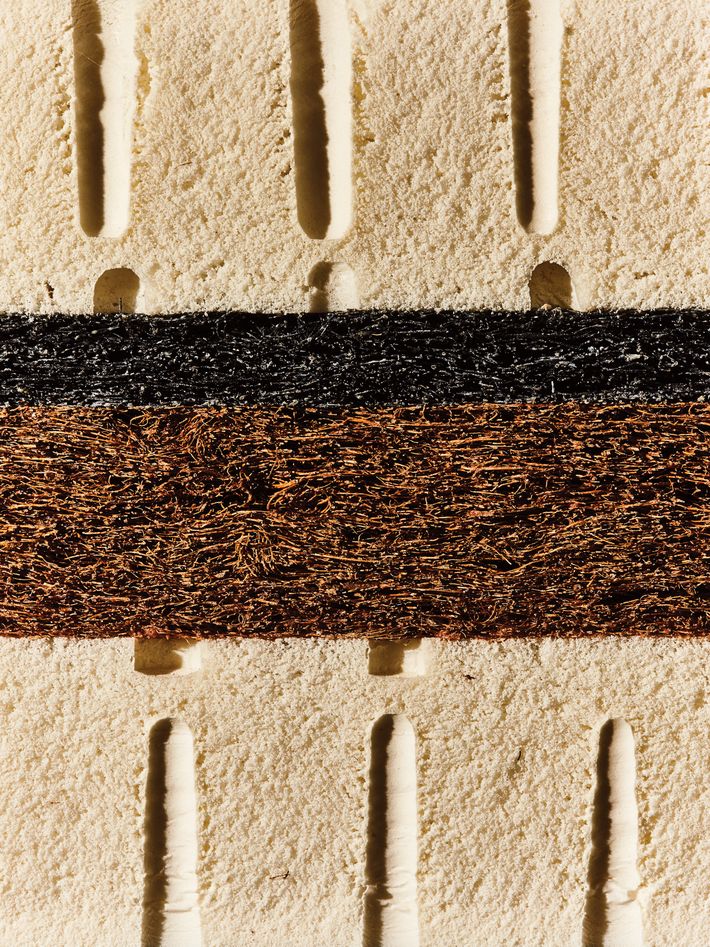
Coco-Mat
Coco-Mat’s starter mattress is the Afroditi ($1,340 for a full at Coco-Mat, 49 Mercer St.), made with about five inches of natural latex and a cotton cover. But latex alone is very soft; other Coco-Mats have coconut fiber, seaweed, and horsehair for firmness.
Zenhaven
The inside of the Zenhaven mattress ($1,699 at zenhaven.com) is made of layers of talalay latex that are sandwiched between New Zealand wool and wrapped in a cotton cover. A 120-day home trial is offered.
Spindle
The Spindle mattress ($1,150 at spindlemattress.com) arrives at your door with three latex layers, each in its own box, and an inch of wool from the Pacific Northwest that you stack and stuff into the cotton twill cover yourself.
Avocado Green Mattress
Launched in 2015, the Avocado Green Mattress ($1,199 at avocadogreenmattress.com) is made of Dunlop latex and New Zealand wool and comes in either a standard 11-inch “gentle yet firm” model that’s hand-tufted or with an optional pillow-top.
Sleep on Latex
Sleep on Latex (from $899 at sleeponlatex.com), with its Sri Lankan latex and New Zealand wool, comes in a box and unravels much like the Casper. Buyers choose between three firmness levels, and the cotton cover can be removed for dry cleaning.
Essentia
Essentia tops its Dunlop latex with one of the only natural memory foams on the market, made of Hevea milk and grapefruit seed and jasmine oils ($2,845 at Essentia, 36 W. 34th St.).
Nest Bedding
For a vegan option, Nest Bedding’s Graphite Latex Mattress ($2,899 at Nest Bedding, 196 Bowery) forgoes a wool layer and uses graphite-infused latex, which is supposed to sleep cooler than regular latex. —L.S.
Do You Mind Schlepping to an Outlet in Wayne, New Jersey?
“I found out about the Bloomingdale’s mattress outlet in Wayne, New Jersey (469 Route 46), through a friend — he and his wife are crazy bed people. They’ll go to a hotel, and if the bed’s not good enough, they’ll check out. Anytime we were invited to spend the weekend at their home, we always slept exceptionally well. Mattresses — especially high-end ones — get returned all the time for various reasons, and many times they’ve never been used. The outlet takes them. King-size mattresses here can sell for around $1,000. I am partial to Shifman (which are handmade and can retail for as much as $30,000), but the outlet also carries Stearns and Foster, Kluft, and Astra. On holiday weekends, there are promotions and sales, like free box springs, or an extra 10 or 20 percent off.” —Jody Quon, New York photography director
It’s Been Over a Year, and I Still Can’t Decide on a Mattress
By Jada Yuan
My mattress dilemma came into my life disguised as a gift. One day last summer, I walked onto my apartment landing to find a gorgeous, $1,900 cherrywood platform bed frame my neighbor was just giving away. All I had to do was upgrade my ancient, hand-me-down mattress from a full to a queen.
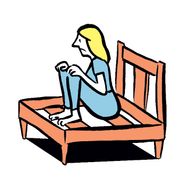
Soon I was staying up all night scouring mattress-review sites and online message boards — and spiraling into an existential crisis. Every option seemed like a determiner of my core identity. Was I a memory-foam person or an innerspring person? A hybrid compromiser? Or maybe a latex rebel? Was gel padding brilliant or basic? What was my coil-count limit? Did I need them to be pocketed? If I’ve never had a pillow top, is that because pillow tops aren’t for me or because I’m a masochist denying myself true pleasure? What if I wasn’t sure if I’m a side sleeper or a back sleeper? Didn’t I understand that if I got the wrong level of firmness for my sleep position, I’d be stuck with it for the next ten to 12 years? I wasn’t getting any closer to picking a mattress, but this was providing a lot of material for my therapist around my fear of commitment.
And even once I’d figured out I was in the firm-to-extra-firm innerspring camp (it seemed like a major victory to declare that all memory-foam mattresses feel like they’re dead inside to me), that barely narrowed things down. I live alone in a three-story walk-up with an entryway so cumbersome I had to lift my couch in through the kitchen window. I don’t want to try something for 100 days and switch it out; I want to choose well and never have to think about how to get that mattress into my apartment again. Sites like Sleepopolis and the Sleep Sherpa are overly weighted to the bed-in-a-box specials the reviewers get for free. Mattress Clarity, my favorite and the one I found the most authoritative, didn’t recommend a single innerspring bed I could try in person, unless I wanted to head to the Brentwood Home store in Los Angeles — which I definitely contemplated doing. (It’s since closed.) I thought I’d found The One, an Aireloom (Ronald Reagan’s favorite brand), at Long’s, a family-run mattress store on the Upper West Side. But it was twice my original budget, and I got spooked by its no-return policy and low grades on Sleep Like the Dead. Long’s explained to me that only crazy people write mattress reviews online (or read them, I was starting to believe), and I’m sure Long’s is right, but it did nothing to assuage my paranoia. Dig deep and you’ll find enough horror stories of back pain, dented and sagging pillow tops that companies refuse to warranty, and thousands of dollars squandered to lose sleep for days — the opposite of the desired outcome of researching mattresses in the first place.
I’ve solicited advice on Facebook; recruited my mom, my dad, and several friends for second opinions; gone to the New York showrooms for Casper, Leesa/Sapira, Nest Bedding, and Keetsa; ventured to a fancy furniture store to try the Wright mattress it had on display; gone to a friend’s place to try a Saatva; even mapped out routes to Long Island to a Jennifer Convertibles to try out Kingsdown, since it doesn’t sell them in the city anymore — and stopped myself, because that really was insane. [Editor’s note: The Sapira mattress is now simply known as the Leesa Hybrid.] I have a pile of business cards from salespeople and dozens of papers filled with pros and cons and prices and add-ons and delivery fees and restocking fees (beware, Keetsa will get you there). It’s finally down to three contenders: the one I can’t afford, the one I sort of can’t afford, and the one I can afford but am least excited about. But every time I get to the point of purchase, I’m so exhausted I just fall asleep on my still damned comfortable, still too-small bed.
The Future of Mattresses
(That are also available now.)
It Can Brew Coffee
Eight Sleep’s Smart Mattress ($950 for a full at eightsleep.com) connects to Wi-Fi-enabled devices to do things like start brewing your coffee when you hit snooze or tell Amazon’s Alexa when to start warming up the bed. It’ll also give you a sleep report in the morning with stats on breathing rate and body movements. (The mattress includes a sleep-tracking smart cover that you can throw over any existing bed; you can buy it separately for $399.)
It Can Train You for a Triathlon
Designed specifically for athletes, the ReST Bed (from $2,799 at restperformance.com) has five zones — head, shoulder, lumbar, hips, and legs — and monitors almost 2,000 pressure points. Using a pump below the mattress, the bed automatically adjusts each zone to desired firmness levels, even as you change positions in the middle of the night.
It Can Monitor the Kids
From Sleep Number comes one of the only smart kids’ mattresses. The SleepIQ Kids K2 ($1,100 for a twin at sleepnumber.com) connects the children’s bed to a parent’s smartphone and uses sensors to send alerts when your child is restless or out of bed. For those who are afraid of the dark, there’s built-in lighting underneath the mattress that turns on when kids get out of bed, and there is a separate night-light that can be remotely shut off once they’re finally asleep.
It Can Spy on Your Partner
And coming soon … the Smarttress. Developed in Spain and still apparently in the manufacturing process, it has sensors embedded in its springs that use ultrasonic waves to track whenever someone’s using the mattress (including TMI details about the intensity of pulses per minute), then send notifications to a connected smartphone. The point is to spy on cheating lovers. —L.S.
*This article appears in the May 1, 2017, issue of New York Magazine.
The Strategist is designed to surface the most useful, expert recommendations for things to buy across the vast e-commerce landscape. Some of our latest conquests include the best women’s jeans, rolling luggage, pillows for side sleepers, ultra-flattering pants, and bath towels. We update links when possible, but note that deals can expire and all prices are subject to change.
Every editorial product is independently selected. If you buy something through our links, New York may earn an affiliate commission.
